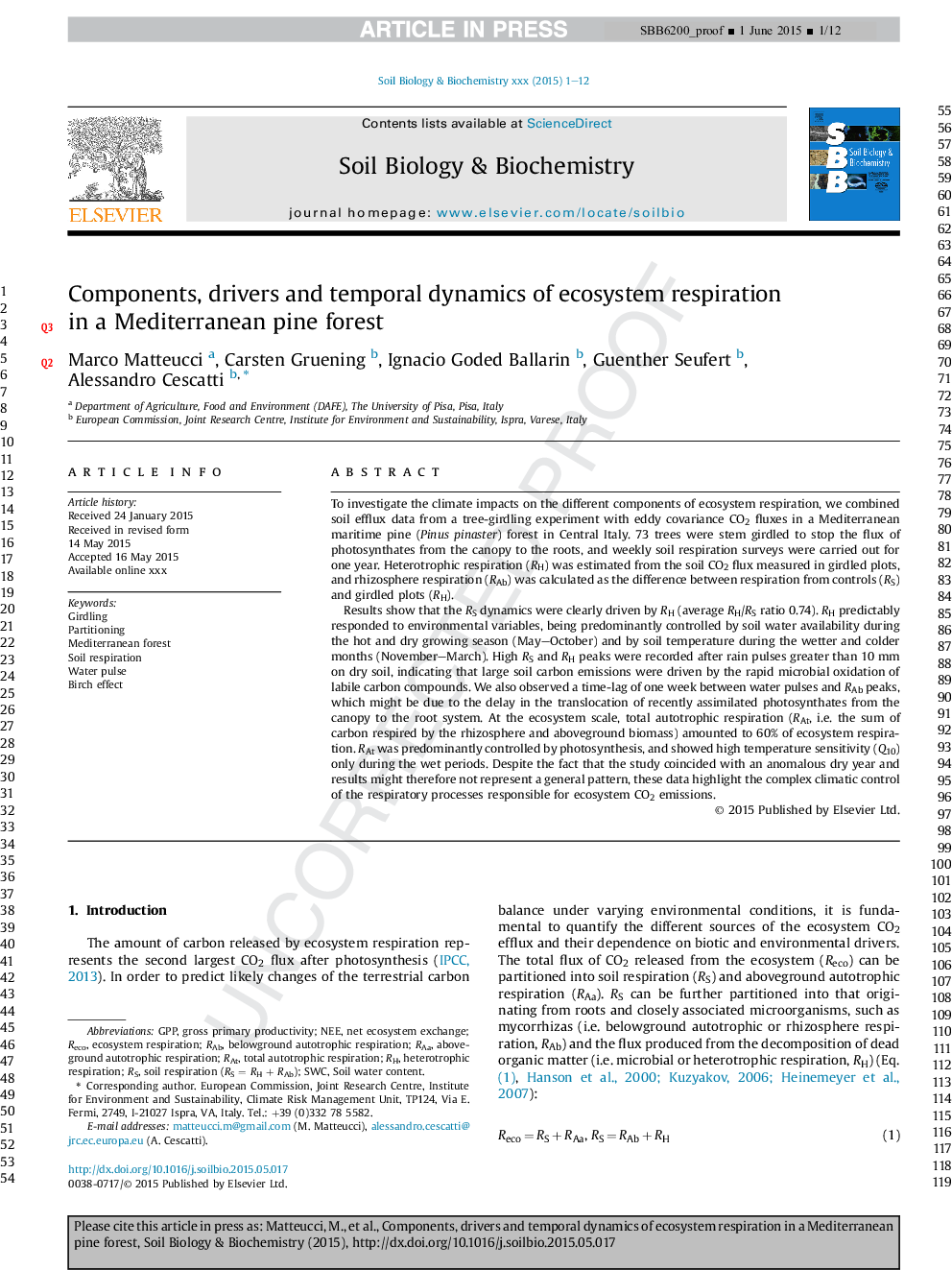| Article ID | Journal | Published Year | Pages | File Type |
|---|---|---|---|---|
| 8363998 | Soil Biology and Biochemistry | 2015 | 12 Pages |
Abstract
Results show that the RS dynamics were clearly driven by RH (average RH/RS ratio 0.74). RH predictably responded to environmental variables, being predominantly controlled by soil water availability during the hot and dry growing season (May-October) and by soil temperature during the wetter and colder months (November-March). High RS and RH peaks were recorded after rain pulses greater than 10Â mm on dry soil, indicating that large soil carbon emissions were driven by the rapid microbial oxidation of labile carbon compounds. We also observed a time-lag of one week between water pulses and RAb peaks, which might be due to the delay in the translocation of recently assimilated photosynthates from the canopy to the root system. At the ecosystem scale, total autotrophic respiration (RAt, i.e. the sum of carbon respired by the rhizosphere and aboveground biomass) amounted to 60% of ecosystem respiration. RAt was predominantly controlled by photosynthesis, and showed high temperature sensitivity (Q10) only during the wet periods. Despite the fact that the study coincided with an anomalous dry year and results might therefore not represent a general pattern, these data highlight the complex climatic control of the respiratory processes responsible for ecosystem CO2 emissions.
Keywords
Related Topics
Life Sciences
Agricultural and Biological Sciences
Soil Science
Authors
Marco Matteucci, Carsten Gruening, Ignacio Goded Ballarin, Guenther Seufert, Alessandro Cescatti,
